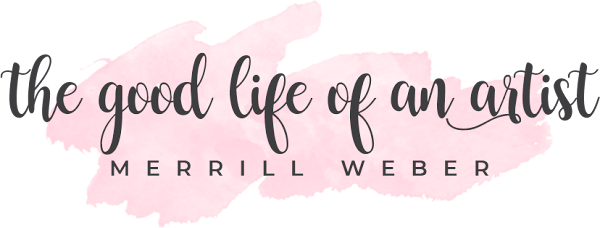It's no secret that I love to paint flowers! This time, my focus was on the little pitcher that, for as long as I can remember, housed my stepfather's toothbrush. It wasn't bone china or anything valuable, but it was his and I miss him.
Step 1, I used my handy dandy View Catcher to select what I was going to paint from my still life setup. I purchased my View Catcher HERE.
Step 2 brings the ugly stage. Think: chrysalis. I began by covering the entire surface (canvas, in this case, although sometimes Gessobord) with transparent oil paint. I generally use a color that relates to the local color of what I am depicting. I do this even in the areas that will end up light, despite the fact that the transparent oils are dark.
Step 3, I used what’s called a Kemper wipe out tool to make a quick sketch of my still life setup in the first pass of wet oil paint. I often use this same tool to sign my paintings while they’re still wet. I bought mine HERE. Sometimes I sketch in the wet paint, and other times I just add big blocks of opaque paint and skip this step. Try both methods and see which one speaks to you.
Lastly, I added opaque and transparent oil paint, working from dark to light. With big brushes, I added big blocks of color, reducing the size of my brushes with each pass. Since my light source was to my left, I used warmer tones on the left side. I added detail to the pitcher, as that's the highlight of this painting.
Here's a peek at my palette:
I hope you enjoyed sharing my painting process. If you have any questions, do not hesitate to post them below.
Click HERE to SUBSCRIBE to my monthly newsletter to read more about painting and The Good Life of an Artist.
Step 1, I used my handy dandy View Catcher to select what I was going to paint from my still life setup. I purchased my View Catcher HERE.
Step 2 brings the ugly stage. Think: chrysalis. I began by covering the entire surface (canvas, in this case, although sometimes Gessobord) with transparent oil paint. I generally use a color that relates to the local color of what I am depicting. I do this even in the areas that will end up light, despite the fact that the transparent oils are dark.
THESE ARE THE TRANSPARENT COLORS ON MY PALETTE:
- Indian Yellow
- Purple Dioxazine
- Ultramarine Blue
- Sap Green
- Permanent Rose
- Magenta
- Transparent Red Medium (Rembrandt)
- Caribbean Blue (Old Holland)
- Transparent Oxide Orange (Rembrandt)
- Transparent Oxide Brown (Rembrandt)
Step 3, I used what’s called a Kemper wipe out tool to make a quick sketch of my still life setup in the first pass of wet oil paint. I often use this same tool to sign my paintings while they’re still wet. I bought mine HERE. Sometimes I sketch in the wet paint, and other times I just add big blocks of opaque paint and skip this step. Try both methods and see which one speaks to you.
Here's a peek at my palette:
I hope you enjoyed sharing my painting process. If you have any questions, do not hesitate to post them below.
Click HERE to SUBSCRIBE to my monthly newsletter to read more about painting and The Good Life of an Artist.





